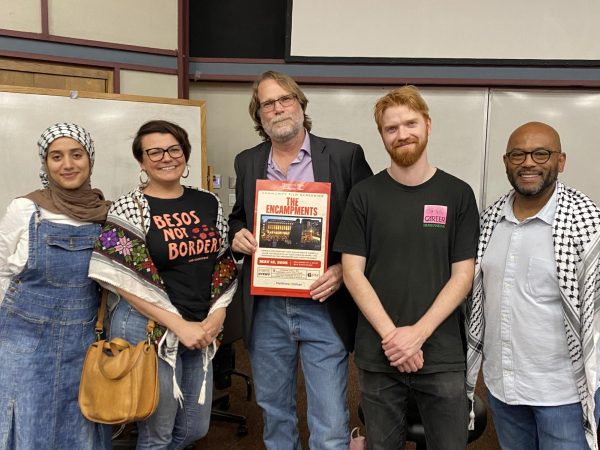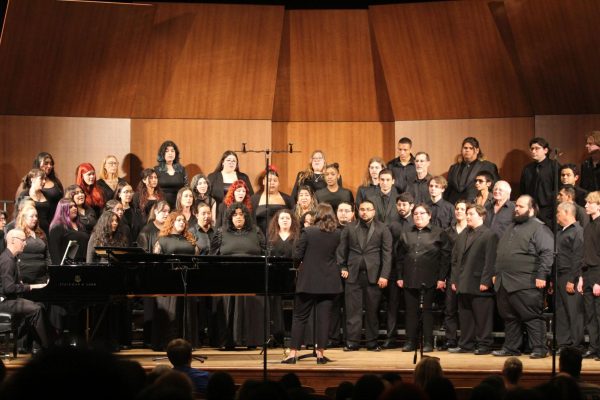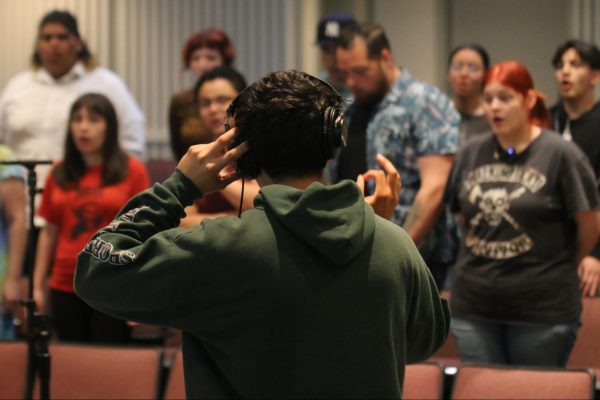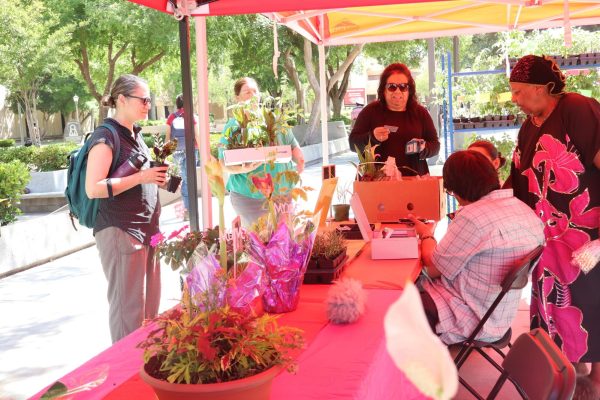FCC Professors Show Off Martial Arts Skills
Fresno City College staff members showed students their skills in their respective martial arts on April 6 in FCC’s wrestling room.
There were three martial arts workshops held throughout the day on Thursday. Multiple staff members who happen to be martial arts practitioners took the time to teach students their fighting ability.
The first workshop was held at 9 a.m. and was hosted by Asian-American studies professor John Cho.
Cho has been teaching at FCC full-time since 2001 and has been a practitioner of the Seven Star Mantis Style of Kung Fu for over 30 years.
Cho had originally been trained in Shaolin Longfist style, then learned Seven Star Mantis Style visually and through many years of practice.
Seven Star Mantis Style is based on variable, sequential and quick strikes that emphasize moving through an opponent and not allowing for exchanges to occur.
Cho’s style also involved knees, elbows, backfists and pulls to knock opponenets off balance and disable them as quickly as possible.
Kemp Kwon Do blackbelt and FCC Computer Science major Nikolas Martinez was in attendance at Cho’s workshop and all the workshops of the day along with his students and friend Justin Minor. Minor, an anthropology major at FCC, followed the kata with Martinez.
Cho led the students in a kata, or a series of choreographed movements meant to drill attacks in martial arts not unlike shadow boxing.
“He started off with a simple kata which is what all styles usually start off with,” said Martinez, in regards to Cho’s lesson. “I feel he actually did quite well.”
The second seminar took place at 11 a.m. and was hosted by the Dean of Workforce Development and the Career and Technology Center, Tim Woods.
Woods is a 35-year practitioner and brown belt in Shotokan, a Japanese hard style martial art developed in the 1800s in Okinawa.
“Shotokan is about fundamentals, it’s about simple strong techniques,” said Woods. “The focus is to disable and get away.”
The workshop consisted of basic form and movements that are the basis of Shotokan. Woods stated that the simplicity of the exercises make Shotokan accessible to the most novice of martial artists.
Woods emphasized that Shotokan is not about flashy technique, but rather effective debilitating attacks for self defense.
“You build a strong house on a stronger foundation,” said Woods, “and so the foundation is all about form.”
For Woods, Shotokan means more than defeating would-be assailants or opponents, but the discipline and calming of his mind.
After Woods led students through the movements, students were able to practice what they had learned through simulated attacks with wooden sticks.
The last martial arts workshop of the day was taught by Native-American studies professor Bernard Navarro.
Navarro is a black belt in Brazilian Jiu-Jitsu, a submission and grappling based martial arts with deep roots in Japanese Judo.
Navarro’s workshop consisted of simple and easily applicable self-defense techniques that emphasized using leverage over an opponent rather than brute strength.
Navarro also took the time to talk to students about the history of Jiu-Jitsu and it’s application in sports.
Mixed Martial Arts is a growing sport in the United States and is recognized all over the world, but it would be nothing if not for the sport that exposed many to the importance of ground fighting, according to Navarro.
Navarro told students stories of the famous Gracie Vale-Tudo contests in which the Gracie family, who are known as the innovators behind BJJ, would challenge other martial artists to no rules fights.
Navarro showed students how seemingly dangerous positions like being on one’s back can be turned into advantageous positions through submission attacks and sweeps.
Students in attendance were able to try the techniques and were encouraged to “go all out” by Navarro, being that Jiu-Jitsu is almost completely devoid of any strikes.
The Martial Arts Workshops event at FCC is an annual event. This year however, less than five people attended each individual workshop. However, the low attendance of this year’s workshops did not discourage instructors and staff from offering their time.
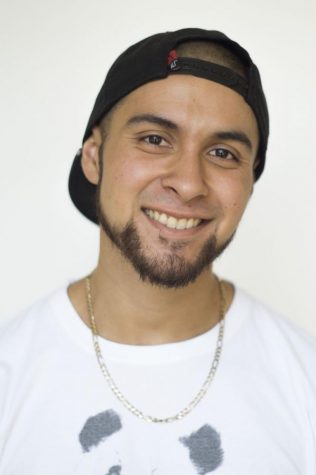
Marco Rosas is a 21 year old Communications Major and third year student at Fresno City College. He is serving as the Fall 2017 Entertainment Editor for...

